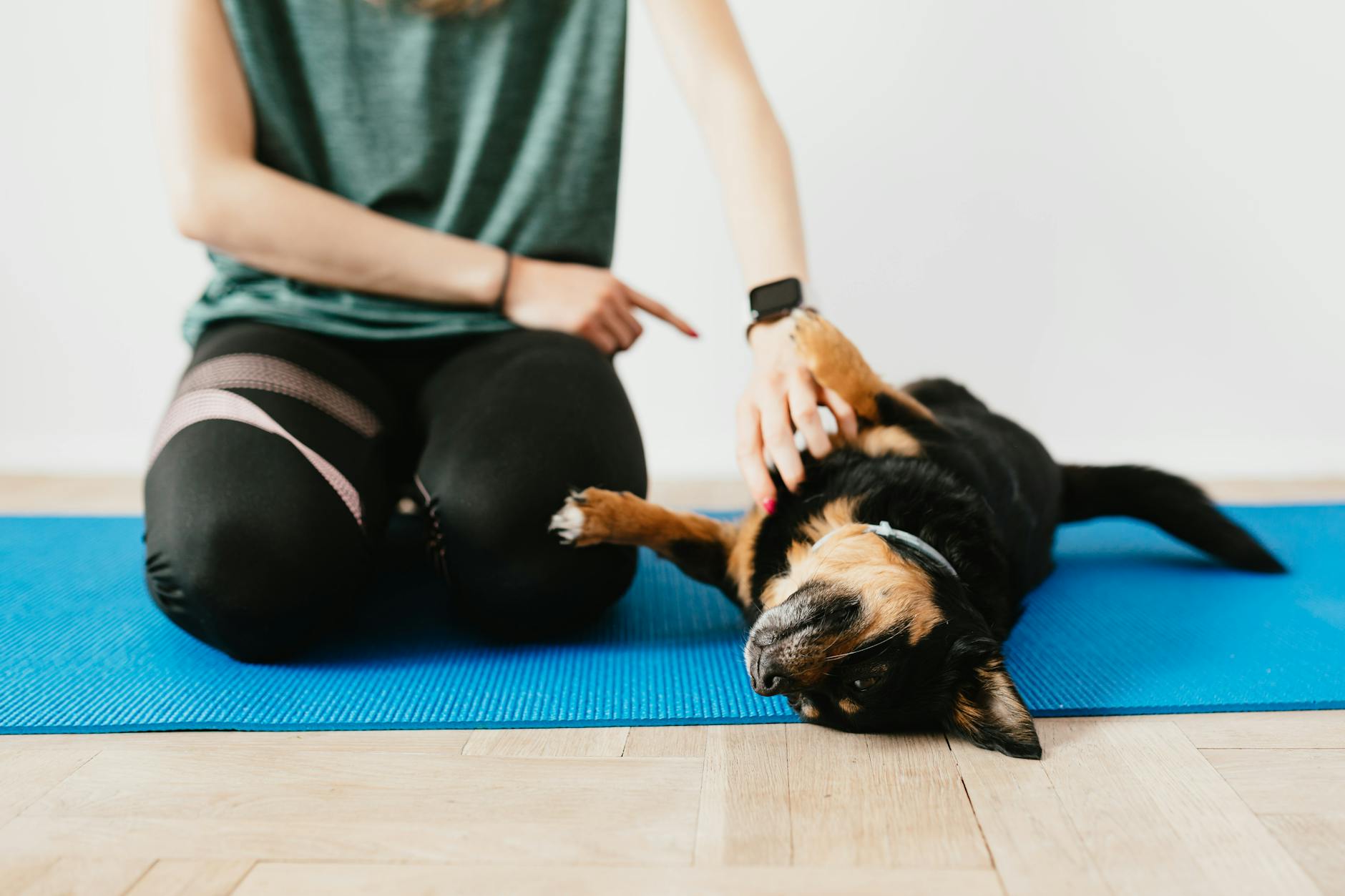
🐾 Is your furry friend more of a wild child than a well-behaved companion? Do you dream of strolling through the park with a dog that walks calmly by your side, instead of pulling you towards every squirrel in sight? You’re not alone. Millions of dog owners struggle with obedience issues, but there’s hope on the horizon!
Imagine transforming your dog’s behavior with just seven simple commands. It might sound too good to be true, but with consistency and the right techniques, you can unlock a whole new level of communication with your canine companion. From mastering the basics like “sit” and “stay” to more advanced skills like “heel” and “leave it,” these commands will not only make your life easier but also strengthen the bond between you and your four-legged friend.
In this guide, we’ll explore The 7 Commands That Will Transform Your Dog’s Behavior, breaking down each one and showing you how to implement them effectively. Whether you’re dealing with a boisterous puppy or teaching an old dog new tricks, these commands will set the foundation for a happier, more harmonious relationship with your pet. So, grab some treats, put on your training hat, and let’s dive into the world of canine obedience! 🐕🦺👨🏫
The “Sit” Command: Building a Foundation
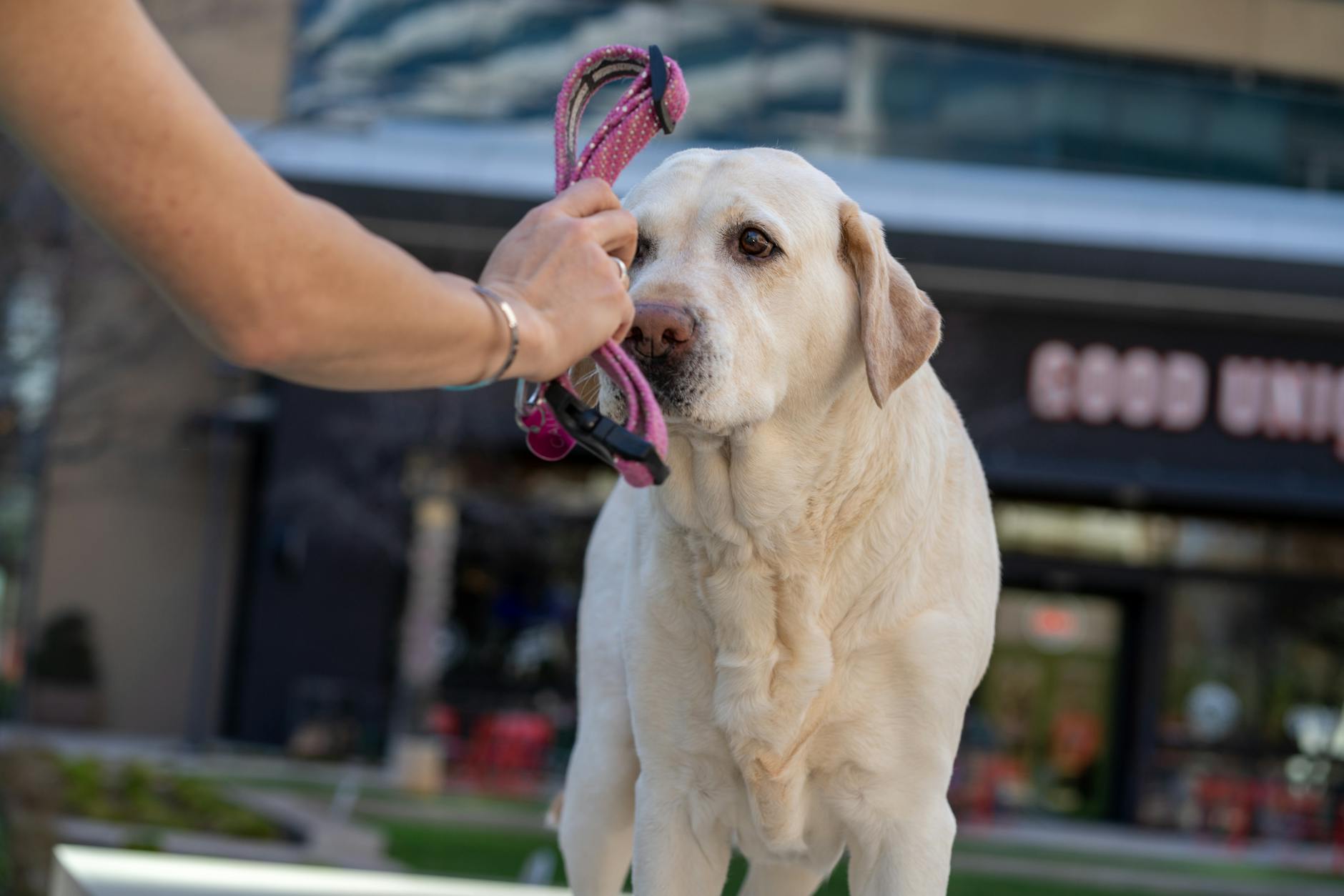
A. Establishing basic obedience
The “sit” command is the cornerstone of basic obedience training for dogs. It’s often the first command taught to puppies and serves as a foundation for more advanced training. By mastering this simple yet crucial command, your dog learns to focus on you and respond to your cues.
To teach the “sit” command effectively:
- Hold a treat close to your dog’s nose
- Slowly move the treat up and back over their head
- As their head tilts up, their bottom will naturally lower
- Once they’re in a sitting position, say “sit” and immediately reward
Consistency is key in reinforcing this behavior. Practice in short, frequent sessions throughout the day for best results.
B. Creating focus and attention
The “sit” command is an excellent tool for capturing your dog’s attention and redirecting their focus. This skill is invaluable in various situations, from busy streets to crowded parks. Here’s a comparison of a dog’s behavior before and after mastering the “sit” command:
| Behavior | Before Training | After Training |
|---|---|---|
| Focus | Easily distracted | Attentive to owner |
| Impulse control | Reactive to stimuli | Waits for cues |
| Calmness | Excitable | Composed |
| Responsiveness | Inconsistent | Reliable |
C. Versatility in various situations
The “sit” command’s versatility makes it an essential part of your dog’s behavioral repertoire. It can be applied in numerous scenarios:
- Before meals to encourage polite waiting
- At doorways to prevent rushing out
- During greetings to avoid jumping on people
- At street crossings for safety
- In public spaces to maintain control
By consistently reinforcing the “sit” command in these diverse situations, you’re not only teaching obedience but also instilling a sense of calm and self-control in your dog. This foundational command sets the stage for more advanced training and contributes significantly to your dog’s overall behavior transformation.
“Stay”: Mastering Impulse Control

Increasing duration gradually
Teaching your dog to “stay” is crucial for mastering impulse control. Start by asking your dog to stay for just a few seconds, then gradually increase the duration. Use a timer to track progress and reward your dog with treats and praise for successful stays.
| Duration | Reward Level |
|---|---|
| 5 seconds | Small treat |
| 15 seconds | Medium treat |
| 30 seconds | High-value treat |
| 1 minute+ | Jackpot reward |
Adding distance and distractions
Once your dog can stay for longer periods, introduce distance and distractions:
- Step back slowly while your dog stays
- Increase distance gradually
- Add mild distractions (e.g., bouncing a ball)
- Progress to more challenging distractions
Remember to return to your dog to deliver rewards, reinforcing that staying in place leads to positive outcomes.
Ensuring reliability in emergencies
To make the “stay” command reliable in emergencies:
- Practice in various environments
- Use sudden noises or movements as distractions
- Teach a release word (e.g., “okay” or “free”)
- Reward heavily for maintaining the stay during high-stress situations
Now that we’ve covered the “stay” command, let’s move on to the essential “come” command for perfecting your dog’s recall.
“Come”: Perfecting the Recall
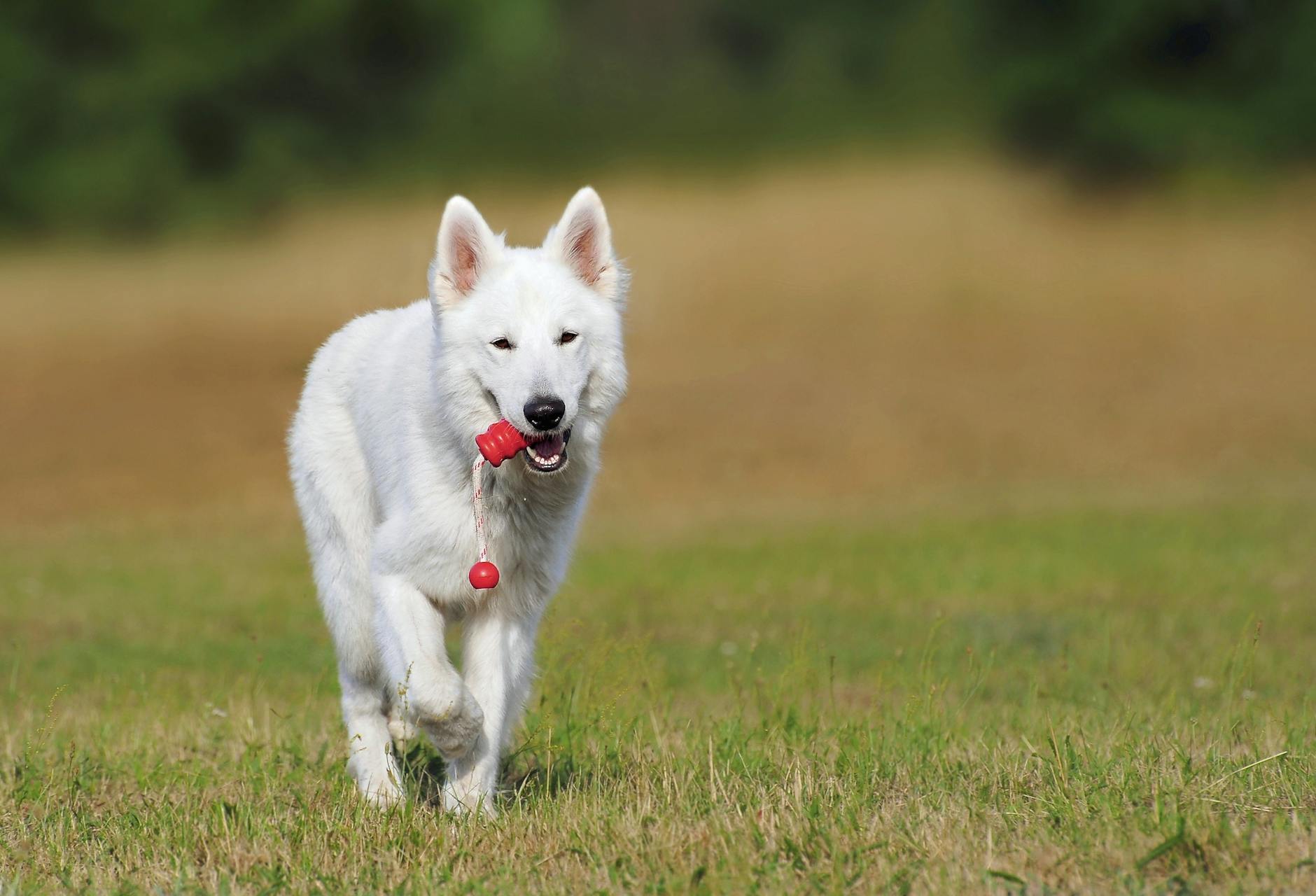
A. Building a positive association
To perfect your dog’s recall, start by creating a positive association with the “Come” command. Use high-value treats and enthusiastic praise to make coming to you the most rewarding experience for your dog.
Positive reinforcement techniques:
- Use a cheerful tone
- Offer special treats reserved only for recall training
- Incorporate play and affection as rewards
- Never punish your dog for coming to you
B. Practicing in different environments
Gradually increase the difficulty of your recall training by practicing in various settings:
| Environment | Difficulty Level | Tips |
|---|---|---|
| Home | Easy | Start indoors with minimal distractions |
| Backyard | Medium | Introduce outdoor scents and sounds |
| Park | Hard | Practice with other dogs and people around |
C. Overcoming distractions
As your dog becomes more reliable, introduce controlled distractions to strengthen their recall:
- Use a long leash for safety during outdoor training
- Start with mild distractions and gradually increase intensity
- Practice recall when your dog is engaged in other activities
- Reward heavily when your dog chooses to come despite distractions
Remember, consistency is key in recall training. Practice regularly and always make coming to you a positive experience for your dog. With patience and persistence, you’ll develop a strong and reliable recall command.
Now that we’ve covered the essential “Come” command, let’s move on to another crucial skill for your dog’s behavior transformation: the “Leave It” command.
“Leave It”: Curbing Unwanted Behaviors
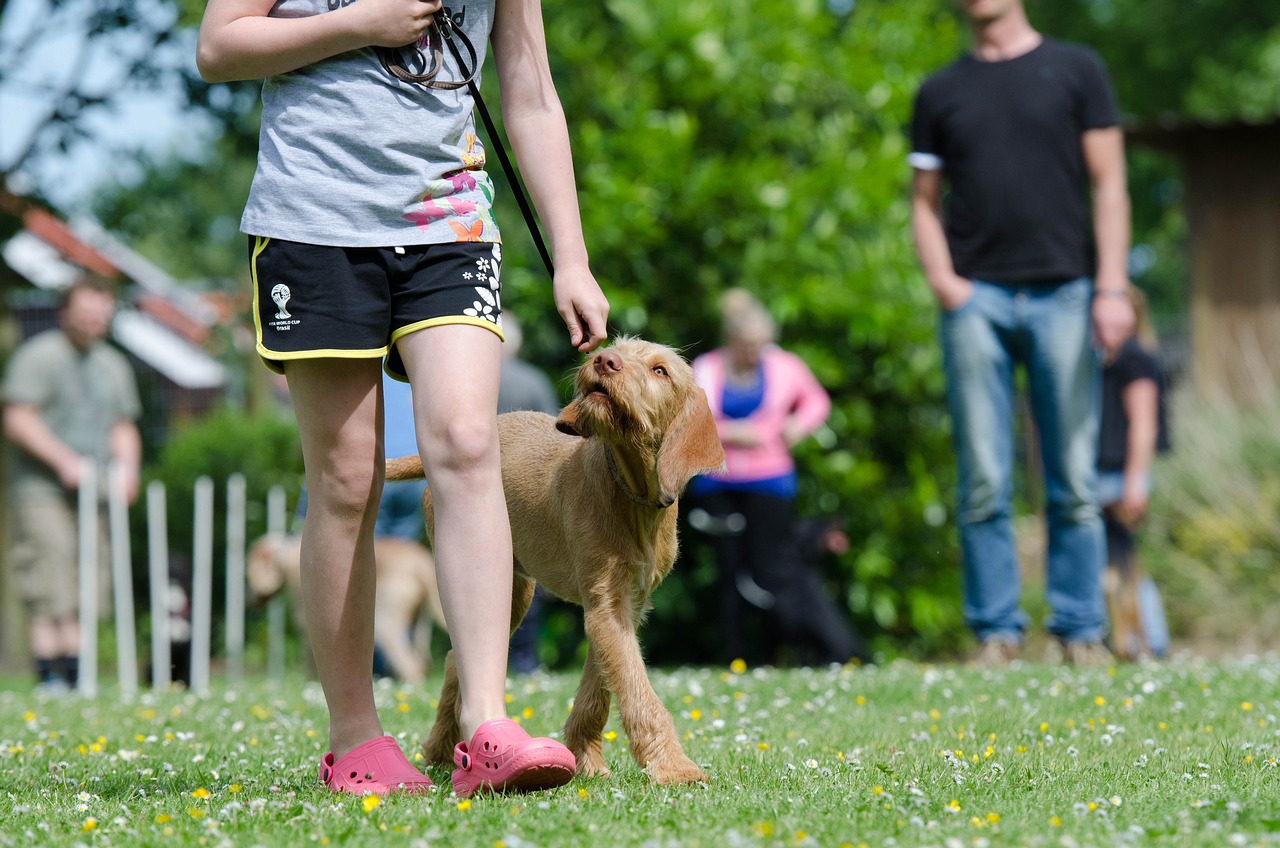
Preventing resource guarding
Resource guarding is a common issue that can be addressed with the “Leave It” command. This behavior occurs when dogs become possessive over food, toys, or other items. Teaching your dog to “Leave It” helps prevent conflicts and promotes a more relaxed atmosphere in your home.
- Start with low-value items and gradually progress to high-value objects
- Use positive reinforcement techniques, rewarding your dog for compliance
- Practice in various environments to ensure consistency
Avoiding dangerous items
The “Leave It” command is crucial for your dog’s safety, especially when encountering potentially harmful objects outdoors. This skill can prevent accidental ingestion of toxic substances or dangerous items.
| Dangerous Items | Why “Leave It” Helps |
|---|---|
| Toxic plants | Prevents poisoning |
| Sharp objects | Avoids injury |
| Garbage | Reduces health risks |
Redirecting focus to appropriate objects
Once your dog masters “Leave It,” you can guide their attention to more suitable alternatives. This redirection technique reinforces positive behaviors and helps your dog make better choices.
- Offer a favorite toy as an alternative to the forbidden item
- Use treats to reward your dog for focusing on appropriate objects
- Incorporate play sessions to reinforce the desired behavior
By consistently practicing the “Leave It” command, you’ll notice a significant improvement in your dog’s impulse control and overall behavior. This skill not only enhances your dog’s safety but also strengthens the bond between you and your furry companion. In the next section, we’ll explore the “Heel” command, which is essential for pleasant and controlled walks.
“Heel”: Walking in Harmony
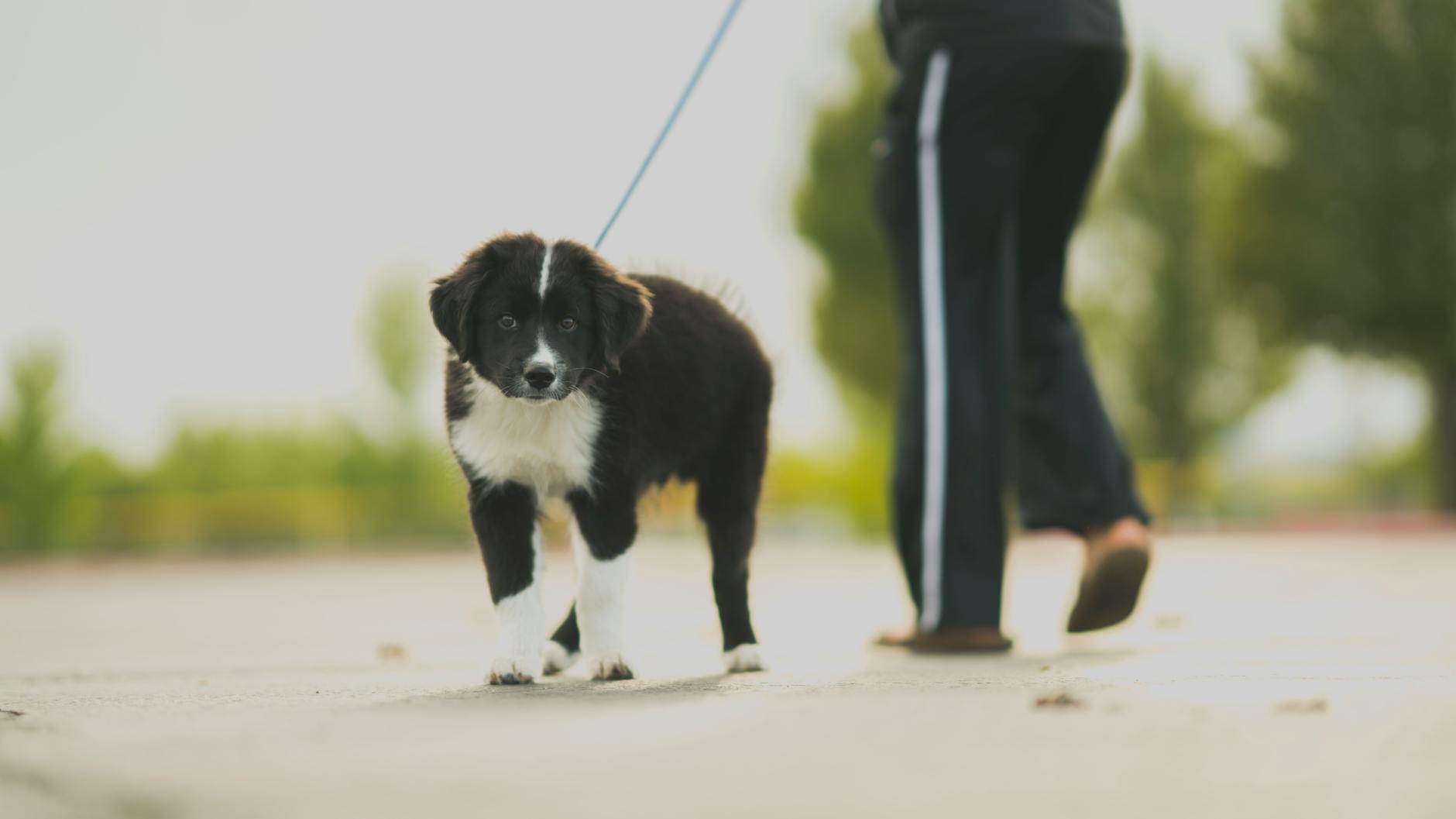
A. Reducing leash pulling
Leash pulling is a common issue that can turn walks into frustrating experiences. To address this, start by using a front-clip harness or head halter, which gives you more control and discourages pulling. Implement the “stop and wait” technique: whenever your dog pulls, stop walking and wait until they return to your side before proceeding.
Here’s a step-by-step guide to reduce leash pulling:
- Choose the right equipment
- Start in a low-distraction environment
- Reward your dog for walking beside you
- Practice the “stop and wait” technique
- Gradually increase distractions
| Technique | Description | Benefit |
|---|---|---|
| Front-clip harness | Attaches leash to chest | Redirects dog’s momentum |
| Head halter | Controls head movement | Provides gentle guidance |
| Stop and wait | Halt when dog pulls | Teaches loose leash walking |
B. Improving focus during walks
To enhance your dog’s focus during walks, incorporate engaging exercises and rewards. Use the “watch me” command to redirect your dog’s attention to you. Practice this command at home first, then gradually introduce it during walks.
C. Navigating crowded areas safely
When walking in busy areas, maintain a shorter leash and use the “heel” command consistently. Practice in progressively busier environments, rewarding your dog for staying close. Always be aware of your surroundings and anticipate potential distractions.
Now that we’ve covered the “Heel” command and its applications, let’s move on to the “Down” command, which is crucial for encouraging calmness in various situations.
“Down”: Encouraging Calmness
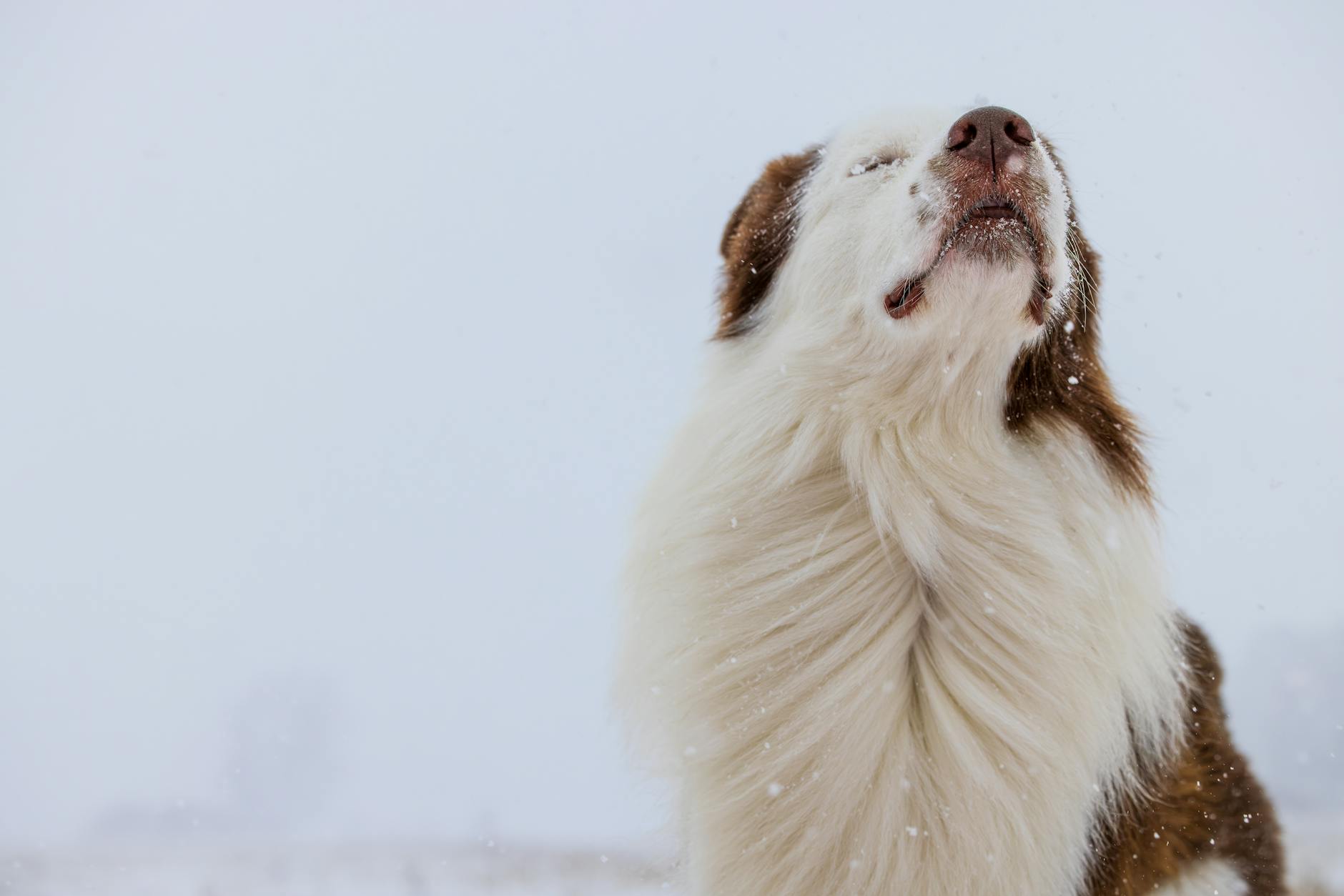
Creating a settle cue
Teaching your dog a “settle” cue is crucial for encouraging calmness. This command helps your dog understand when it’s time to relax, regardless of the environment. Here’s a step-by-step guide to creating an effective settle cue:
- Choose a unique word or phrase (e.g., “Settle” or “Relax”)
- Start in a quiet environment
- Wait for your dog to naturally lie down
- Mark the behavior with a clicker or verbal praise
- Reward with a treat
- Repeat and gradually add the chosen cue
As your dog becomes more familiar with the cue, practice in different locations and with increasing distractions.
Managing excitement levels
Helping your dog manage their excitement is key to maintaining a calm demeanor. Use these techniques to keep your dog’s energy in check:
- Ignore overexcited behavior
- Reward calm behavior consistently
- Provide mental stimulation through puzzle toys
- Practice impulse control exercises
| Excitement Level | Management Technique |
|---|---|
| Low | Positive reinforcement |
| Medium | Redirect to a calm activity |
| High | Time-out in a quiet space |
Promoting relaxation in various settings
Generalizing the “Down” command across different environments is essential for a well-behaved dog. Start in low-distraction areas and gradually progress to more challenging locations. Use these strategies to promote relaxation:
- Practice in new environments regularly
- Increase duration gradually
- Use a special mat or bed as a portable “calm zone”
- Incorporate aromatherapy or calming music
Remember, consistency and patience are key when teaching your dog to remain calm in various settings. With practice, your dog will learn to relax on cue, making outings and new experiences more enjoyable for both of you.
“Off”: Respecting Boundaries
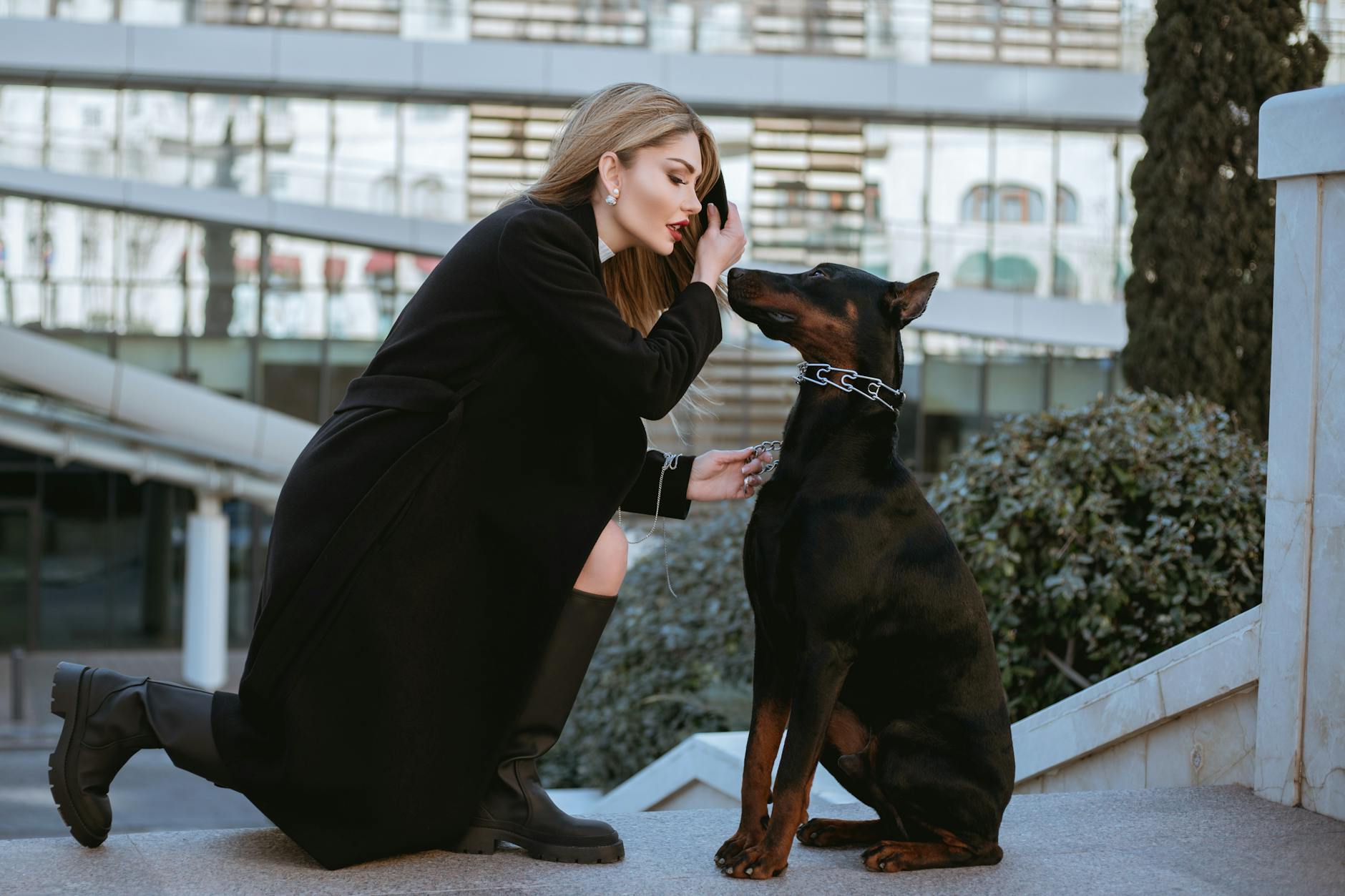
A. Preventing jumping on people
The “Off” command is crucial for preventing your dog from jumping on people, a common but often unwelcome behavior. Here’s how to effectively teach this command:
-
Consistency is key:
- Use the same word (e.g., “Off”) every time
- Ensure all family members use the same command
- Practice regularly in various situations
-
Positive reinforcement techniques:
- Reward your dog for keeping all four paws on the ground
- Use treats, praise, or toys as rewards
- Gradually reduce treats as the behavior improves
| Do’s | Don’ts |
|---|---|
| Remain calm | Push or knee the dog |
| Ignore jumping behavior | Yell or scold |
| Reward when all paws are down | Give attention while jumping |
B. Keeping paws off furniture
Teaching your dog to stay off furniture is an extension of the “Off” command. Here’s how to establish this boundary:
-
Designate specific areas:
- Provide comfortable dog beds or mats
- Place these in areas where the family gathers
-
Redirect and reward:
- When your dog attempts to jump on furniture, use the “Off” command
- Immediately direct them to their designated spot
- Reward generously when they comply
C. Establishing personal space rules
The “Off” command also helps in teaching your dog to respect personal space:
-
Set clear boundaries:
- Use baby gates or barriers if necessary
- Consistently enforce rules about which areas are off-limits
-
Practice the “Off” command in various contexts:
- When entering your personal space
- During meal times
- While you’re working or resting
D. Improving overall manners
By mastering the “Off” command, you’re not just teaching a single behavior, but improving your dog’s overall manners:
-
Enhanced self-control:
- Dogs learn to resist impulses
- Helps in other training scenarios
-
Better social interactions:
- More pleasant greetings with visitors
- Improved behavior in public spaces
Remember, patience and consistency are key when teaching the “Off” command. With time and practice, your dog will learn to respect boundaries, leading to a more harmonious relationship between you and your furry friend.
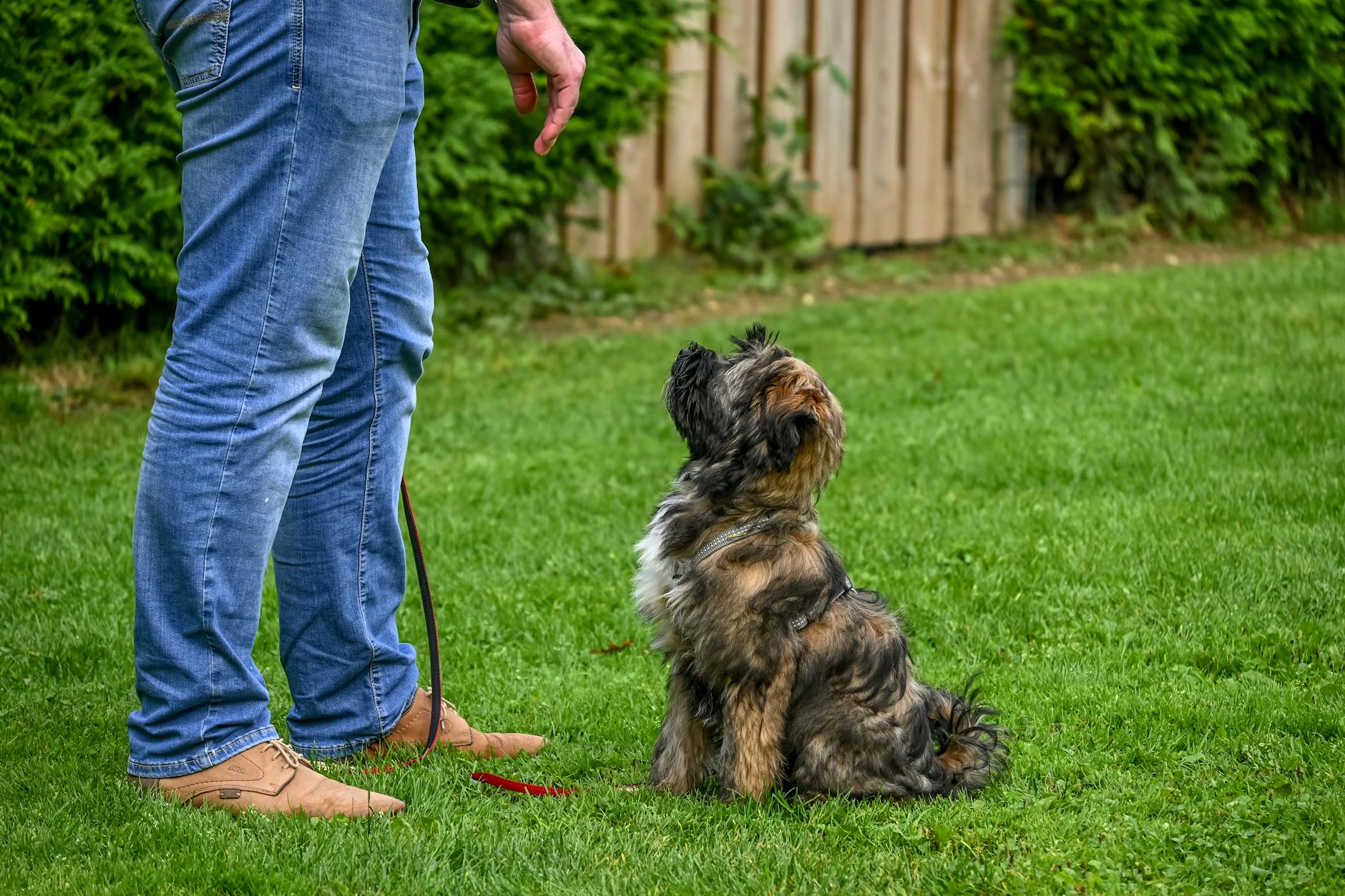
Mastering these seven essential commands can revolutionize your dog’s behavior and strengthen your bond. From the fundamental “Sit” to the more advanced “Off,” each command serves a crucial purpose in shaping your furry friend’s conduct. By consistently practicing these commands, you’ll cultivate a well-behaved, responsive, and happy canine companion.
Remember, patience and positive reinforcement are key to successful training. As you work through these commands, you’ll not only see improvements in your dog’s behavior but also experience the joy of effective communication with your four-legged friend. Start implementing these commands today, and watch as your dog transforms into a model of obedience and companionship.

